During this long process, I looked up some existing bestiaries, both real and fictional. And I will tell you that some of them are really quite interesting to read.

Among them is the Aberdeen Bestiary. It is a 12th century English illuminated manuscript from Scotland. This one is interesting since you can clearly see that during these time mythical and real creatures had a very thin boundary in between, sometimes disappearing altogether. And you can see their delightful depictions of creatures.

Since I began seriously studying medieval manuscripts for the first time few years ago, I just couldn't stop exploring further the worlds they record with their ink pens and paints.
Aside from ancient bestiaries from the Middle Ages, there is also contemporary one in the form of an interesting site about animals. The first post from there is about mythical animals. Their site is called Animalarium (Rima suggested it! :))
And the 19th century illustration below, if I am not mistaken, is an example of the Sirens, the fantastical bird women. They are rather distinct from another type of bird women, the Harpies, in that the Sirens are known for their beautiful features and fatal voices which are known to lure seamen to a trance as they either stop moving their ships to listen, or crash against rocks. Their legend is more prominently derived from stories of "Jason and the Argonauts" and "The Odyssey." In the first story, the ship Argo is saved by one of the crew members, Orpheus, son of the Muse Calliope, who sang a song on his lyre so beautifully that it overcame the spell of the Sirens (indeed, his power of song is great enough to allow him passage in the underworld and move Hades to a tearful compliance in another story that this feat seems so easy for him and conceivable for us). In the Odyssey, the protagonist Odysseus instructs his fellows to lash him to the mast of their ship as the other stuff their ears with beeswax so that he can hear the song of the Sirens while the others manage to row their ship to safety.
It might be odd to know that the illustration here is from the 19th century but looks older, nonetheless. This type of illustration came from Russia, and is inspired by both the iconic and manuscript tradition of rendering; it is referred to as lubok (you can click the word for more information).
And the 19th century illustration below, if I am not mistaken, is an example of the Sirens, the fantastical bird women. They are rather distinct from another type of bird women, the Harpies, in that the Sirens are known for their beautiful features and fatal voices which are known to lure seamen to a trance as they either stop moving their ships to listen, or crash against rocks. Their legend is more prominently derived from stories of "Jason and the Argonauts" and "The Odyssey." In the first story, the ship Argo is saved by one of the crew members, Orpheus, son of the Muse Calliope, who sang a song on his lyre so beautifully that it overcame the spell of the Sirens (indeed, his power of song is great enough to allow him passage in the underworld and move Hades to a tearful compliance in another story that this feat seems so easy for him and conceivable for us). In the Odyssey, the protagonist Odysseus instructs his fellows to lash him to the mast of their ship as the other stuff their ears with beeswax so that he can hear the song of the Sirens while the others manage to row their ship to safety.
It might be odd to know that the illustration here is from the 19th century but looks older, nonetheless. This type of illustration came from Russia, and is inspired by both the iconic and manuscript tradition of rendering; it is referred to as lubok (you can click the word for more information).


Another thing is about medieval herbs and planting. It is quite interesting to see how they are attended to. But of course, one of the best preserved practices in herbal medicine is observed by the Chinese, who still resort to many plants (as well as other things) to treat ailments even until today.
This is an example of a book about plants and herbs during the Middle Ages. It is the "Book of Simple Medicines" by Matthaeus Platearius which was written around the 1480's to the 1500's. For more information about this book, you can go here.
This is an example of a book about plants and herbs during the Middle Ages. It is the "Book of Simple Medicines" by Matthaeus Platearius which was written around the 1480's to the 1500's. For more information about this book, you can go here.
I will use some of the facts here as part of my fictional bestiary. Though some are not useful to today's medicinal standards, it is still interesting to study these plants as if they belonged to a separate world. Perhaps that is why I like history in general because I find them as if they belonged to another place utterly distinct from the present.


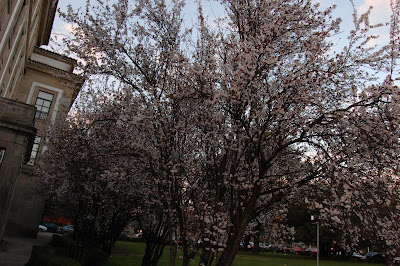
She told me recently that for the past few weeks, the sky is still gray there and the streets are windy so she frequently has a hard time walking in the streets. Which is contrast in here, where the sun is shining brightly and the sky is still in burning blue (which I told you in my recent posts). And during her idle hours, she either studies, draws some random pictures, or indulges herself in fiction (in book or in animated form).

Another picture is her colored pencil drawing, which is still in progress, of a Harpy. The differences between Sirens and Harpies are that the latter is not known for their singing; and that they possess faces of repulsive women. They will often torment other creatures by stealing food or making general disturbances: screeching, terrorizing, and so and so. Again, their legend is known mainly from the journey of the Argonauts, who encounter the bird-women as they torment the man they seek, the prophet Phineas. Curiously, they are addressed as "the dogs of Zeus;" there is a long association with them as punishers of those that incurred divine wrath, or who are deemed as sinners (Dante Allighieri, in the Divine Comedy, describes those dead from suicide delegated to the Harpies).

And this is the finished work. A beautiful illustration of a Harpy by the Bunny.
***
I am also planning to earn some money this summer for my next semester. Since the services of Etsy is not available in our country, I am thinking to sell some of my works in Multiply or eBay. Well, probably I should find some part time job before I enter business, is what most of those I know say.













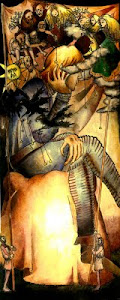

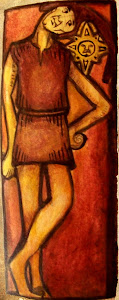







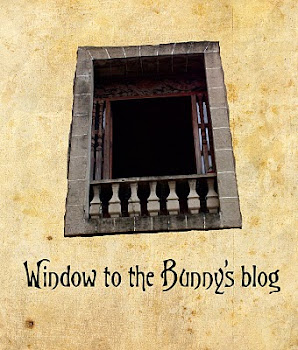




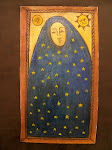

2 comments:
The aberdeen bestiary is fascinating isn't it and the project you are working on sounds intriguing! i love the harpy that your bunnie drew, beautiful. Good luck with selling your work, such a shame you cannot get etsy.
Can I just say that you have some amazing interests?
I hope your book for the Bunny goes well-and the sirens are a part of my favorite stories in mythology. They are remarkable creatures, even if slightly haunting by nature.
Post a Comment